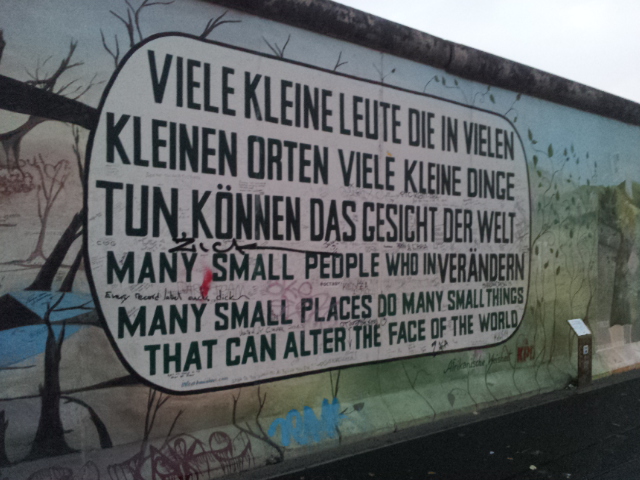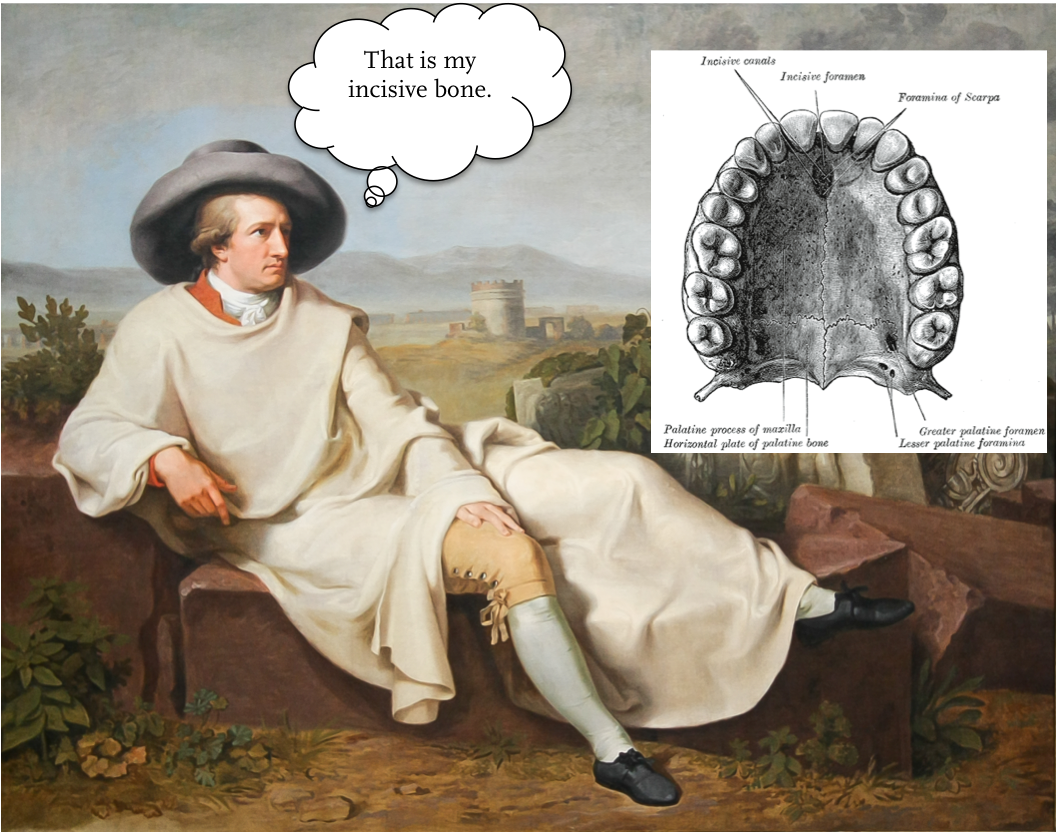Making sense of our connected world

The great potential of citizen science
Citizen science is nothing new.
What do Benjamin Franklin (see picture obove), Johann Wolfgang von Goethe, and Francis Bacon have in common?
All were amateur scientists. Franklin invented the lightning rod, Goethe discovered the incisive bone and was moderately successful as an art theorist and Bacon can be considered as nothing less than the father of empiricism, or can he? Either way, the three shared a passion for discovering things in their spare time. None of them earned their pennies as professional scientists, if that profession even existed back then.
Discovery is a matter of thirst for adventure
Citizen science is in fact old hat. It existed long before disciplines existed and could be described as the rightful predecessor of all empirical science. It laid the foundations for what we know today as the scientific method: the rule-governed and verifiable analysis of the world around us. Still, amateurs in science have often become marginalized over the past 150 years, as scientific disciplines have emerged and being a scientist has become a real thing to do (read more here).
Citizen science’s second spring
Today, citizen science is experiencing a second spring and it is no surprise that the internet has had a hand in it. In recent years, hundreds of citizen science projects have popped up, and they’re encouraging people to spend their time tagging, categorizing and counting in the name of science (see here and here). Some unfold proteins in an online game (Foldit), while others describe galaxies from satellite images (GalaxyZoo and here) or count wild boars in Berlin and deliver the numbers to an online platform (Wild boars in the city). Citizen science has moved online. And there are thousands of people in thousand different places that do many of funny things that can alter the face of science. The Internet is where they meet.
Berlin Wall, East Side Gallery
The logic of Internet-based citizen science
The decentralised and voluntary character of today’s citizen science projects questions the way research has been done for a long time. It opens up science for a multitude of voluntary knowledge workers. In some respect, the new kind of citizen science is drawing on open innovation strategies developed in the private sector. In their recent Research Policy article, Franzoni and Sauermann refer to this type of amateur science as crowd science. The the term is extremely effective at capturing the underlying mechanics of most citizen science projects, which involve low-threshold-large-scale-participation.
The advantages of citizen science
When it comes to data collection, social participation and science communication, the integration of non-experts into the discovery process is promising.
For scientists, it is an excellent way to collect data. If you visit one of the citizen science directories (for example here and here) and scroll through the projects, you will see that most of them involve some kind of documenting. For example, these citizen scientists count rhinoceros beetles, wild boars, salamanders, neophytes, mountains and trees. There is nothing that cannot be quantified, and a life solely devoted to counting the number of rhinoceros beetles in North America would indeed be mundane for an individual scientist, not to speak of the travel expenses. Citizen scientists are great data sensors.
For citizen scientists it is a way of partaking in the process of discovery and learning about fields that interest them. For example, in a German project from the Naturschutzbund (German Society for the Conservation of Nature), sports divers are asked to count macrophytes in Northern German lakes. The data they collect helps them to monitor the water quality in the lakes. In follow-up sessions, the divers are informed about the implications of the number of macrophytes for the lake. Participants can see the difference their efforts made and learn about the ‘state of health’ of their freshwater lakes. Citizen science can be an excellent education and communication tool.
Citizen science brings insight from without into the academic ivory tower and allows researchers and interested non-researchers to engage in a productive dialogue. This is a much-needed opportunity: for some time now, scholars and policy makers have been saying how challenging it is to open up science and involve citizens.
Still, what makes the new kind of internet-enabled citizen science science, is the context volunteers work in and not the tasks they perform.
The honey bee problem of citizen science
The old citizen scientists, like Franklin, Goethe or Bacon asked questions, investigated them and eventually discovered something, like Goethe did with his incisive bone. In most citizen science projects today, however, amateurs perform rather mundane tasks like documenting things (see above), outsourcing computing power (e.g. SETI@home) or playing games (e.g. Foldit). You can go to the Scientific American’s citizen science webpage and search for the word ‘help’ and you will find that out of 15 featured projects, 13 are teasered help scientists do something. The division of roles between citizens and real scientists is more than evident. Citizen scientists perform honey bee tasks. The analytic capacity remains with a few. Citizen science today is often a twofold euphemism.
That is not to say that collecting, documenting and counting is not a crucial part of research. In many ways the limited task complexity even resembles the day-to-day reality of in-person research teams. Citizen scientists, on the other hand, can work when they want to and on what they want to. That being said, citizen science is still a win win in terms of data collection and citizen involvement.
An alternative way to think of citizen science
A second way of doing citizen science is not to think of volunteers as thousands of little helpers but as knowledge workers on a par with professional researchers.
Timothy Gowers did that when he initiated the Polymath Project in 2009, a collaborative effort of volunteer mathematicians to solve tricky mathematical problems. Gowers outsourced the challenge of finding a new combinatorial proof of the density version of the Hales-Jewett theorem on his blog. After seven weeks, he announced that the problem had been solved with the help of 40 volunteers, a number far too small to count as massively collaborative.
Gower’s approach designated an alternative form of internet-enabled citizen science, one that involves volunteers with a long-term commitment for analytical tasks. I find this form of citizen science fascinating regarding its capacity to harvest tacit expert knowledge that does not reside in a scientific profession. The expert knowledge of a citizen scientist could involve both, extensive knowledge of a subject matter (e.g. math in Gower’s polymath project) and practical knowledge (e.g. coding, design). This high-threshold-high-involvement citizen science would resemble Benkler’s commons-based peer production or concepts of collective invention from open innovation. It could come in useful for many stages of the research lifecycle.
The core challenges for this kind of citizen science will be to motivate volunteers to make a long-term commitment to a scientific problem and to enable them to perform complex research tasks. That would be a form of citizen science that lives up to its name.
Or did you never want to discover your own incisive bone?
Pictures
- Franklin with kite: Franklin’s Experiment, 1752
- Berlin Wall: shot by author
- Goethe dozing on stones: Goethe in the Roman Campagna, Johann Heinrich Wilhelm Tischbein, 1786
- Incisive bone, Gray’s Anatomy, 1918
This post is part of a weekly series of articles by doctoral candidates of the Alexander von Humboldt Institute for Internet and Society. It does not necessarily represent the view of the Institute itself. For more information about the topics of these articles and associated research projects, please contact presse@hiig.de.
This post represents the view of the author and does not necessarily represent the view of the institute itself. For more information about the topics of these articles and associated research projects, please contact info@hiig.de.

You will receive our latest blog articles once a month in a newsletter.
Research issues in focus
Polished yet impersonal: The unintended consequences of writing your emails with AI
AI-written emails can save workers time and improve clarity – but are we losing connection, nuance, and communication skills in the process?
AI at the microphone: The voice of the future?
From synthesising voices and generating entire episodes, AI is transforming digital audio. Explore the opportunities and challenges of AI at the microphone.
Do Community Notes have a party preference?
This article explores whether Community Notes effectively combat disinformation or mirror political biases, analysing distribution and rating patterns.






